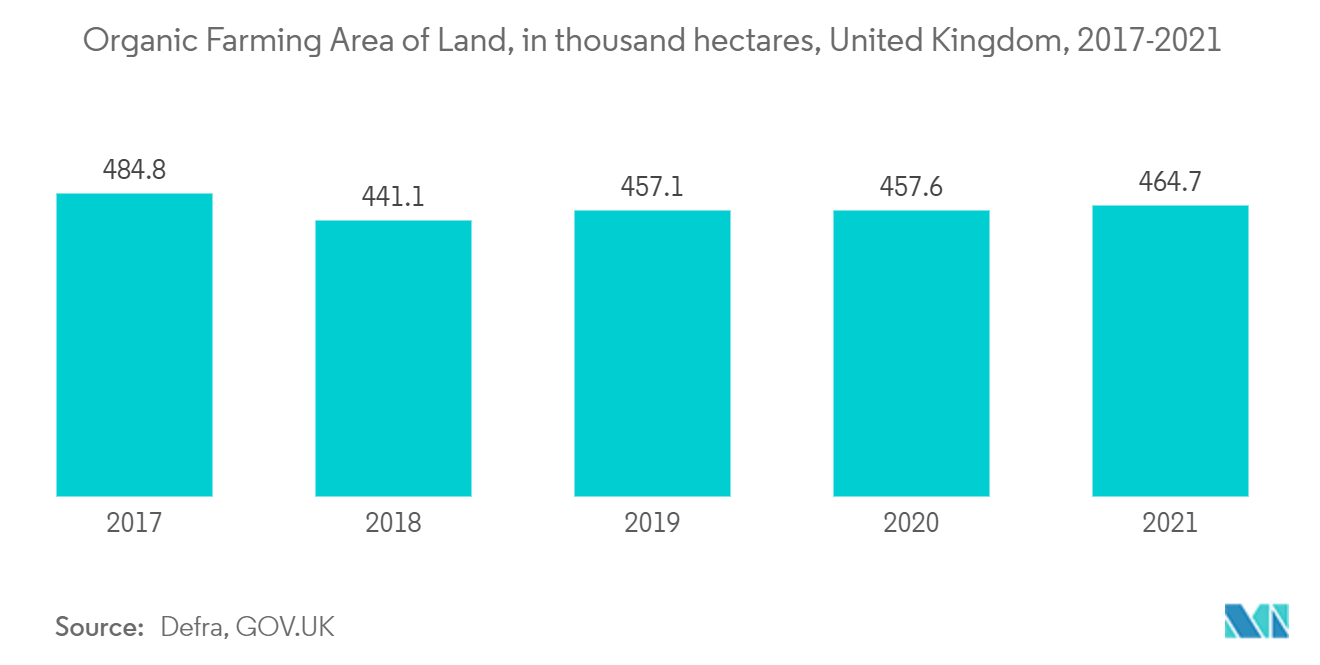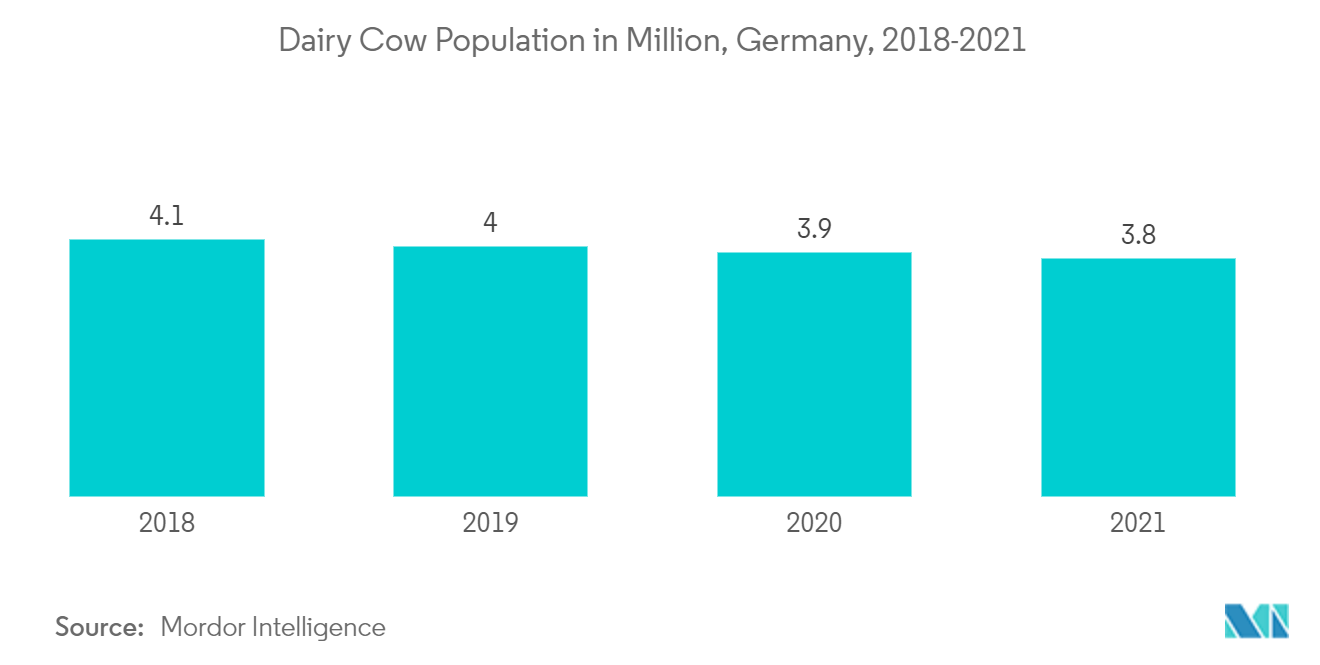Market Trends of Europe Biochar Industry
This section covers the major market trends shaping the Europe Biochar Market according to our research experts:
Increasing Demand for Organic Farming in the Agricultural Industry
- Biochar is a charcoal-like substance created by burning organic material from agricultural and forestry wastes (also known as biomass) in a controlled process known as pyrolysis. Using biochar as a fertilizer for the soil improves the soil's quality and nutrient-carrying and cycling ability, leading to long-term carbon sequestration.
- Biochar can also remediate contaminated soil while providing environmental benefits. Due to its porous structure, biochar includes a low bulk density that helps to achieve a high specific surface area ranging between 50 and 900 m2 g-1 and a high water-holding capacity.
- Europe includes a sophisticated and highly competitive agro-input market with a large and growing organic sector. The rising consumption of organic food presents potential growth opportunities to the organic farming sector, and therefore many new producers are now entering the market, meeting the voluntary European Biochar Certificate (EBC) standard.
- While strong market growth is encouraging, organic farmland area must continue to expand faster to meet the European Commission's (2020) Farm to Fork strategy goal of 25% organic area share by 2030. Among European consumers, common reasons for buying organic food include supporting local businesses, health reasons, and not using pesticides or other sprays.
- The organic farming sector is witnessing steady growth across the European region. For instance, according to BÖLW; Statistisches Bundesamt, there were 35,716 organic farming businesses in Germany in 2021 and 35,396 in 2020.
- Similarly, according to Defra, GOV.UK, in 2021, the organic land used for vegetables in the United Kingdom was 8,872 hectares, and 8,700 hectares in 2020.
- Thus, owing to the factors above, the demand for biochar in organic farming is anticipated to rise exponentially during the forecast period.

Germany Anticipated to Dominate the European Market
- Germany is among the top countries actively executing several biochar projects. For instance, in November 2021, the NovoCarbo Biochar project was initiated to transform wood residues from forest operations and waste wood into stable carbon in the form of biochar.
- Similarly, in the German demo site at the Unteres Odertal National park, low-nutritional grass from the wetlands is converted into biochar through pyrolysis or hydrothermal carbonization (HTC).
- Apart from being used for agricultural purposes, biochar found widespread use as an animal feed in livestock farming in Germany.
- In 2021, compounded feed production was severely affected due to the spread of animal diseases such as Avian Influenza (AI). Furthermore, the dairy cow population in the country lowered in 2021. Overall, the country witnessed a flattened growth in the feed industry, with growth expectations in 2023.
- According to the Statistisches Bundesamt (Destatis), in the autumn of 2021, agricultural holdings in Germany sowed winter rapeseeds on 1.1 million hectares of land for harvest in 2022.
- Moreover, the area sown for the next harvest is 86,700 hectares larger than the area cultivated in 2021, amounting to an increase of 8.7% year-on-year.
- Biochar is also finding increasing usage in the water treatment industry. The German water treatment industry is the largest in Europe and continues to grow considerably. The country includes the largest market for industrial wastewater treatment (WTP) plants across Europe.
- There are around 3,000 treatment plants spread across the region, with around 12,000 discharging companies. Every year, more than 920 million cubic meters of industrial wastewater is treated before being safely discharged into the environment.
- Thus, the abovementioned factors indicate the growth of end-user applications of biochar in the European region, thereby strengthening demand for biochar during the forecast period.

